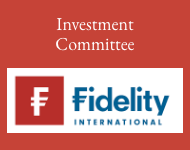In this week’s FundCalibre interview, portfolio specialist Michele Ward provides the lowdown on the T. Rowe Price US Smaller Companies Equity fund, exploring the fund’s philosophy of investing in high-quality companies, letting winners run, and maintaining a balanced approach between growth and value.
Why you should listen to the interview
Michele lets us into the secrets behind the fund’s impressive decade-long performance while highlighting opportunities in today’s markets. We also discuss the impact of interest rates on small-cap companies and look at some of the holdings within the portfolio.
This interview was recorded on 11 June 2024. Please note, answers are edited and condensed for clarity. To gain a fuller understanding and clearer context, please listen to the full interview.
Interview highlights
The secret behind the fund’s successful performance
“It’s a combination of things that have led to this fund’s successful performance. One is that the fund is very broadly diversified. We typically have about 175 stocks in the portfolio and for a lot of investors outside the United States, that sounds like an enormous number, but it’s against an opportunity set of about 3,000 companies so it’s actually fairly concentrated.
“The benchmark, which is the Russell 2500, has an average weight for the typical or average stock of only four basis points. So when we own 50 basis points / 75 basis points of a name, that’s a big high conviction position, but it’s spread across every sector and all the important industries. Focusing on the best companies in a particular industry and sticking with them for the long term has led to a pattern of performance that allows us to capture most of the upside, but not participate so much when things get challenging in the market.
“This is supported by a team of about 50 analysts who comb through the 3,000 opportunities for the really best ideas. And that diversification – hedging out a lot of the macro risk, making sure we’re not absent anything that’s really important – has led to a very consistent pattern.”
Letting your winners run
“This is a philosophy of small-cap investing that actually dates back to Thomas Rowe Price. He was one of our early portfolio managers in the small-cap space. He was the first portfolio manager of our New Horizons fund, which focuses on small-cap growth stocks. And that was launched back in 1960, over six decades ago. But one of the things he learned is, it’s really hard to find great companies and you don’t want to sell them arbitrarily because they hit a particular size, as long as the fund itself stays true to its mission. We have approached investing in US small and mid-cap stocks with the same view.
“The general philosophy allows us to buy anything below the top end of the Russell 2500. That’s about $18 billion in terms of market cap, but we can allow stocks to run past $18 billion; that’s the ‘letting your winners run’ idea. Typically what we find is that we have a handful of names that do extremely well for us and they grow larger. If you just think about that full mid-cap spectrum in the United States, that goes up to about $50 billion. We have one or two names that are in that $30-$50 billion range, and we’re typically harvesting profits in those names.
“One example would be Arthur J. Gallagher, which is one of our largest in terms of market cap positions today. It’s not one of our largest holdings in the portfolio, but it has been an important contributor over the years we’ve owned it – since 2017 – and it’s a company that is very high-quality in its area.
“It’s an insurance brokerage firm which has benefited from a strong insurance pricing cycle, plus the company is extremely well managed. They grow through acquisitions as well as organically; they pretty much do everything right. So we are looking to find opportunities that are smaller in the insurance space, but it’s hard to find one that’s as good a quality as Gallagher. So we sell some nearly every quarter. Sometimes it doesn’t look like we sold a share because they have done so well in that period of time. This is a very high class problem, but it’s really the opportunity set that drives us to sell faster or slower.”
Growth or Value?
“We always have stocks that are growth and value, but we believe that growth and value are not inherent to a company. They are phases in the market. It’s worth noting that it wasn’t that long ago that Microsoft was a value stock. And now we think about it as one of these Magnificent Seven large-cap, growth stocks. So companies can go through growth and value stages of their lives or phases in the marketplace.
“There are some parts of the market that maybe people would consider more value and some that would be considered more growth; but in virtually every sector there’s growth and value. And some of our best ideas have been ones that start out, say as a small-cap value stock and become a mid-cap growth stock. That’s a great outcome for us.
“One example is a company called Molina Healthcare. Molina’s a Medicare/Medicaid-focused HMO (health maintenance organisation) or insurer. And when we bought them, it was definitely a value stock. It was a turnaround situation and a new management team came in, ones that we had known from their prior experience at two other insurance companies, and we knew how well they had done in those experiences. So we were willing to put money into the situation. At the time they came in, they turned the company around – improved its margins, improved its underwriting, put it on the path to growth, and now it’s a mid-cap growth stock. That’s a great success for us because the company has improved its operating earnings and become more expensively valued in the market itself.”
Analysts dig in to find hidden gems
“Small-cap investing is a process of looking through these thousands of companies and finding these interesting opportunities and sometimes they’re really innovative and different.
“One example is a company called Vontier which was a spinoff from a company called Fortive back in 2020 and they provide petrol stations with the pumping equipment and point of sale equipment to sell gas.
“So, if the world is just going to EVs, you wonder are petrol stations a thing of the past? But in reality, at least in the United States, EVs are gaining traction, but hybrids are probably more attractive for most US drivers because we drive a long way. And so, petrol stations are probably not going the way of the buggy whip anytime soon.
“However, Vontier was under a lot of pressure because a couple years ago, there was a huge upgrade cycle and a lot of the convenience store or chains upgraded their systems because of a regulatory change, leaving a period of fallow orders. And that put a lot of pressure on this stock.
“As our analysts dug in, they thought that all of the worst had been discounted in this stock and found that the opportunities going forward were greater than the market was giving credit for. And so we were willing to step in, a classic value name under a lot of pressure, controversy et cetera and the company has proved itself to be far more resilient. There’s more demand out there, there’s more need for ongoing reinvestment, more upgrades that haven’t yet been done, greater parts and service revenue to come.
“We love to find these companies that the market has just tossed out and look for the hidden gem in that situation. And that’s what our analysts are paid to do, day in, day out.”
Conclusion
As a firm, T. Rowe Price has excellent small cap capabilities, as evidenced with this strong performance of the US Smaller Companies Equity fund which has outperformed its benchmark consistently over the last decade.
































